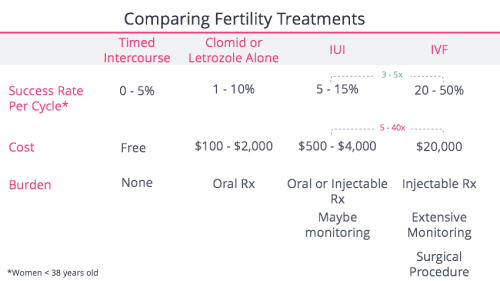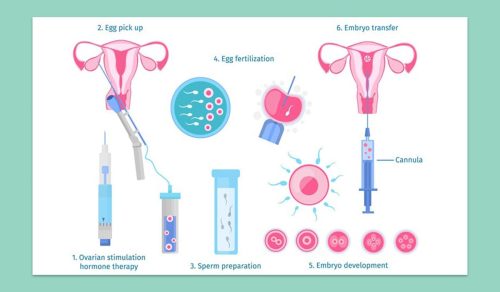
Pelvic Inflammatory Disease (PID) and Infertility: Insights from a Fertility Specialist
As a fertility specialist, one of the most common causes of infertility I see in my practice is pelvic inflammatory disease (PID). PID can be a silent, sneaky culprit—many women don’t even realize they have it until they start trying to conceive and face challenges. It’s one of those conditions that can go unnoticed for years, but its impact on fertility is real and significant.
If you’ve been struggling to get pregnant and think PID might be the cause, let me share some of my experiences and insights to help you understand how PID affects fertility, what it can mean for your chances of conceiving, and what steps you can take to address it.
What Is Pelvic Inflammatory Disease (PID)?
Pelvic inflammatory disease is an infection of the reproductive organs, usually caused by bacteria that spread from the vagina or cervix into the uterus, fallopian tubes, or ovaries. The most common cause of PID is sexually transmitted infections (STIs), particularly chlamydia and gonorrhea. However, PID can also occur after certain gynecological procedures or surgeries, like an IUD insertion or a miscarriage.
Many women with PID don’t experience noticeable symptoms, which is why the condition often goes undiagnosed until a woman starts having difficulty getting pregnant. When symptoms do appear, they can include lower abdominal pain, unusual discharge, pain during sex, or fever. But even in the absence of these symptoms, PID can cause long-term damage to the reproductive organs.
How PID Affects Fertility
The most significant way PID impacts fertility is by causing damage to the fallopian tubes, the delicate structures where fertilization occurs. Tubal scarring is the result of PID, and it can block or distort the fallopian tubes, making it difficult for sperm to reach the egg or for the fertilized egg to travel to the uterus for implantation.
Even mild cases of PID can lead to tubal damage. And once the fallopian tubes are compromised, the risk of infertility increases. I’ve seen many cases where women experience chronic pelvic pain or recurrent miscarriages due to untreated or undiagnosed PID, and by the time they seek help, the damage is already done.
The unfortunate part is that tubal damage is often permanent, and the only way to bypass it is through assisted reproductive technologies like in vitro fertilization (IVF).
A Case That Left a Mark
I’ll never forget a patient named Emily, a woman in her early 30s who came to me after trying to conceive for about two years. She had a history of painful periods but had always managed them with over-the-counter pain medication. She hadn’t had any significant medical problems, and her cycles were regular.
When we conducted an initial evaluation, we found that Emily had significant scarring in both of her fallopian tubes due to PID. She had never been diagnosed with PID, and it turned out that she had contracted chlamydia years ago but hadn’t received proper treatment. The infection had caused enough damage that her tubes were now blocked, and natural conception wasn’t going to happen.
Emily was devastated. She never imagined that an infection from years ago could have such a profound impact on her fertility. But after discussing her options, we decided to move forward with IVF. We retrieved her eggs, fertilized them in the lab, and successfully implanted an embryo into her uterus. Emily went on to have a healthy pregnancy and now has a beautiful baby girl.
Emily’s story is a common one in my practice, and it’s why I always emphasize the importance of early detection and treatment when it comes to PID. If left untreated, PID can have lifelong consequences on a woman’s fertility, but with the right care, it’s possible to still achieve pregnancy.
Diagnosing PID and Fertility Issues
If you’re worried that PID might be affecting your fertility, the first step is diagnosis. Since the condition doesn’t always show obvious symptoms, it can be tricky to detect. But there are a few tests and procedures that can help.
- Pelvic Exam: A pelvic exam is one of the first steps in diagnosing PID. During the exam, the doctor checks for signs of tenderness or inflammation in the pelvic area, which could indicate an infection.
- Transvaginal Ultrasound: This imaging test is commonly used to look for abnormalities in the reproductive organs, including any signs of infection, abscesses, or scarring in the fallopian tubes.
- Hysterosalpingogram (HSG): This X-ray procedure involves injecting a dye into the uterus to check if the fallopian tubes are open or blocked. It’s especially useful for identifying tubal damage caused by PID.
- Laparoscopy: If PID has caused significant damage, a laparoscopy can be used to directly visualize the inside of the pelvic organs. This procedure is more invasive, but it can provide a clear picture of how much damage has occurred.
Dr. Laura Evans, an expert in reproductive health, explains, “PID is one of the leading causes of tubal infertility, and while it’s not always easy to detect, modern imaging and diagnostic techniques have made it much easier to identify.”
Treatment Options for PID-Related Infertility
Once PID has been diagnosed, the treatment approach depends on the extent of the damage and the woman’s fertility goals. Here are the main treatment options:
- Antibiotics: The first line of treatment for PID is a course of antibiotics to treat the infection. If caught early, antibiotics can prevent long-term damage to the reproductive organs and improve a woman’s chances of conceiving naturally. However, if the damage is already done, antibiotics alone won’t restore fertility.
- Surgical Treatment: In cases where PID has caused severe damage, surgery may be necessary to remove abscesses or clear scar tissue from the fallopian tubes. In some cases, tubal surgery can reopen blocked tubes, but this depends on how much damage has occurred.
- In Vitro Fertilization (IVF): For many women with significant tubal damage due to PID, IVF is often the most effective treatment. Since IVF bypasses the fallopian tubes, it allows women with tubal infertility to achieve pregnancy. The eggs are retrieved from the ovaries, fertilized in the lab, and the embryos are implanted directly into the uterus.
Dr. Emily Harris, a leader in IVF treatments, says, “IVF has been a true breakthrough for women whose fertility has been impacted by PID. We can bypass the tubes entirely, and many women with PID are able to have successful pregnancies with IVF.”
The Emotional Journey of PID and Infertility
It’s important to acknowledge the emotional side of dealing with PID-related infertility. Many women who are diagnosed with PID feel a deep sense of frustration or even guilt, especially if the condition was caused by an untreated STI. It can be hard to accept that something out of your control has caused this barrier to starting a family.
I always try to remind my patients that infertility is not their fault. It’s simply a medical condition, and with the right treatment, there is still hope. Emotional support is just as crucial as medical intervention, and I encourage couples to seek counseling, join support groups, and lean on each other during the journey.
Conclusion: There Is Hope
While PID can cause lasting damage to the reproductive organs, it’s not a hopeless situation. With early diagnosis, treatment, and modern reproductive technologies, many women with PID-related infertility can still achieve their dream of becoming mothers. If you suspect that PID might be a factor in your fertility struggles, don’t hesitate to seek help from a fertility specialist.
As I always tell my patients, “No matter the challenge, we will work together to find a solution. Your journey to motherhood may take time, but it’s a journey we can take together.”




